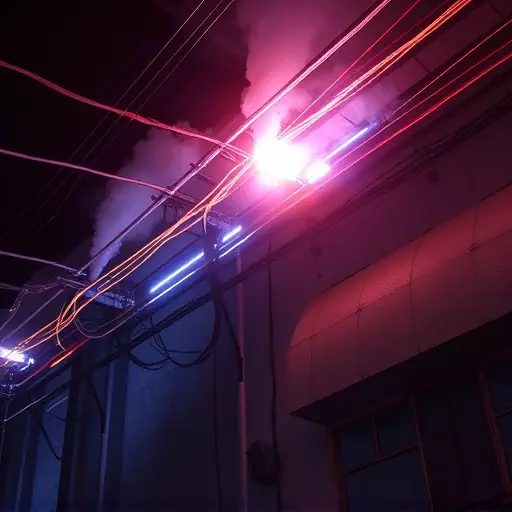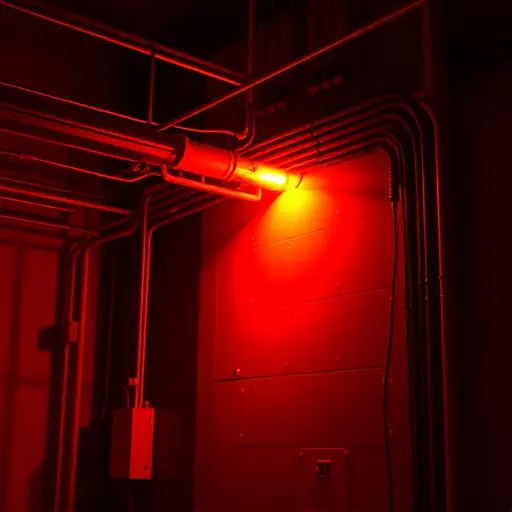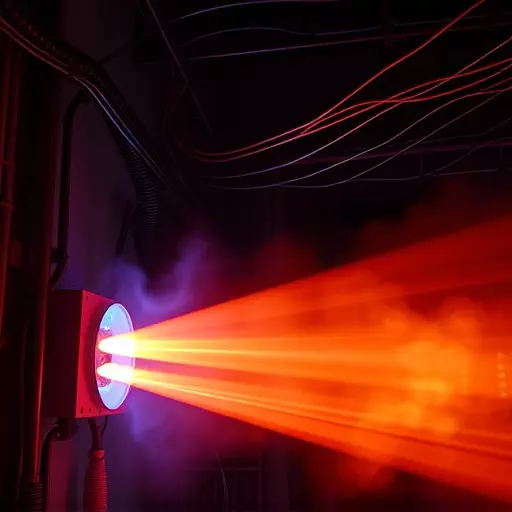In today’s industrial landscape, understanding and effectively communicating risks associated with arc flash scenarios is paramount. Arc flashes, intense bursts of light and heat, pose significant dangers in various sectors, demanding meticulous planning and compliance. This article explores the intricate world of risk communication in arc flash scenarios, guiding readers through essential components: from defining these events to implementing safety standards, ensuring adherence to best practices, and conducting comprehensive arc flash studies that include electrical hazard analysis.
- Understanding Arc Flash Scenarios and Their Risks
- – Definition of arc flash
- – Causes and potential consequences
- – Industries at highest risk
Understanding Arc Flash Scenarios and Their Risks

Arc flash scenarios, often overlooked, pose significant risks within industrial and electrical environments. These sudden, intense releases of electricity occur when a visible plasma channel forms between electrically charged objects, typically due to insulation failure or voltage fluctuations. The arc flash study process involves a thorough investigation to identify potential hazards, assess risks, and implement safety measures according to established arc flash safety standards.
Understanding the dynamics of arc flashes is crucial for conducting a comprehensive electrical hazard analysis. This includes evaluating equipment design, operation protocols, maintenance practices, and personal protective equipment (PPE) availability. By systematically examining these factors, organizations can mitigate risks associated with arc flashes, ensuring a safer work environment and compliance with relevant industry standards.
– Definition of arc flash

Arc flash is a rapid electrical discharge that occurs when there’s an interruption in the flow of electric current through an insulating medium, often within electrical systems. This powerful and dangerous event can result from equipment malfunctions, improper maintenance, or accidental contact with live wires. An arc flash study process involves a thorough investigation to understand and mitigate these risks. It includes an electrical hazard analysis that identifies potential triggers and assesses the severity of the resulting arc flash.
By following established arc flash safety standards, organizations can significantly reduce the risk of injuries and property damage. These standards guide the implementation of protective measures like proper grounding, shielding, and personal protective equipment (PPE). An in-depth understanding of these processes is crucial for maintaining a safe work environment, especially in industries heavily reliant on electrical systems where arc flash remains a significant concern.
– Causes and potential consequences

Arc flashes are sudden, intense electrical discharges that occur when there’s a breakdown of insulation in an electric circuit. This can be triggered by various factors such as equipment failure, improper maintenance, or human error during work activities. The causes of arc flash scenarios are often part of a systematic arc flash study process, which involves a thorough investigation and analysis of potential electrical hazards within a facility. This includes identifying high-risk areas, evaluating protective equipment, and understanding the inherent risks associated with specific tasks.
The potential consequences of an arc flash can be severe, ranging from serious injuries or even fatalities to significant property damage. These events can generate extreme heat, intense light, and powerful forces that can propel debris over a considerable distance. As such, it’s imperative to conduct a detailed electrical hazard analysis as part of the arc flash study process to identify these risks and implement appropriate arc flash safety standards. Compliance with industry-recognized standards ensures that workplaces are equipped with the necessary precautions, including personal protective equipment (PPE), proper labeling, and comprehensive training programs for employees, thereby mitigating the impact of potential arc flash incidents.
– Industries at highest risk

Industries such as electrical power generation and distribution, oil and gas refining, chemical manufacturing, and pharmaceutical production are among the highest at risk for arc flash incidents due to their reliance on complex electrical systems. These sectors often deal with high-voltage equipment, aging infrastructure, and maintenance operations that can create dangerous situations. An arc flash study process involves a comprehensive analysis of these facilities using advanced software tools to identify potential hazards and develop mitigation strategies. This includes assessing the electrical hazard analysis, understanding the characteristics of equipment, and evaluating human factors to ensure compliance with arc flash safety standards.
Regular assessments are crucial for identifying vulnerabilities and implementing effective precautions. By employing scientific methods and adhering to industry-recognized safety guidelines, these industries can minimize the risk of severe injuries or fatalities associated with arc flashes, ensuring a safer working environment for their employees.


